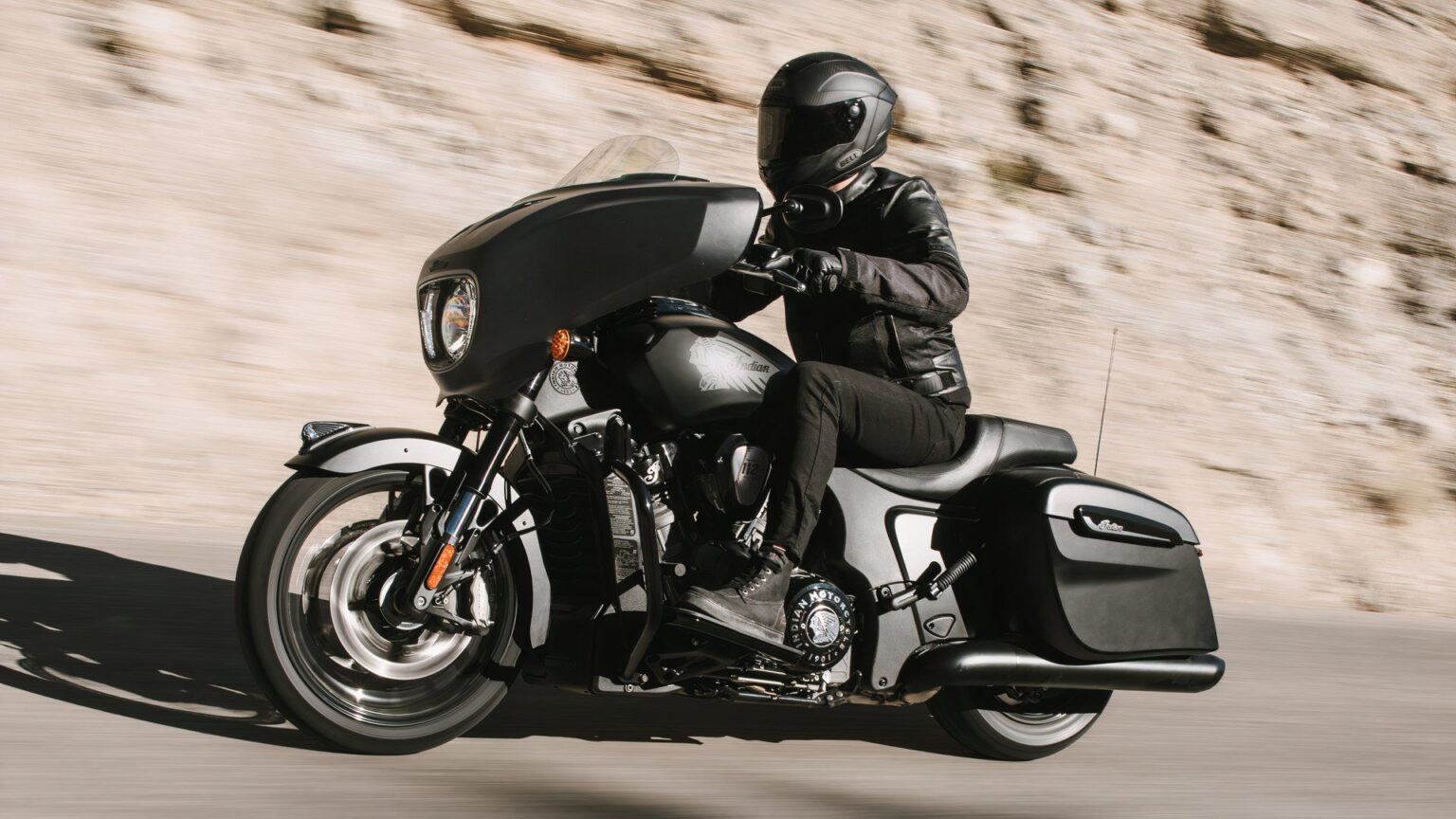While Harley-Davidson is yet to launch its first radar-equipped motorcycle, Indian Motorcycle already offers a bunch of them for 2025. Interestingly, the brand is even working on the next-gen ARAS technology with some really sophisticated features to cater better to the world of motorcycles. One of the new features is Lane Assist, for which Indian has taken a different approach for various riding lanes that can be used by a bike, unlike the predictable motion of a car.
Indian Motorcycle Is Working On A Superior Version Of Radar Technology
With A Different Take On Motorcycle Lane Assist
Indian’s latest patent images showcase a very interesting implementation of the lane assist feature. Unlike cars, bikes change lanes using numerous riding lines because of the two-wheeled setup that allows for movement in both horizontal and vertical axes. In simpler words, leaning at different angles greatly affects the speed and approach of lane change. Indian’s latest patent images show a very clever way of tackling this. Catering to the numerous scenarios is a system of radars and cameras mounted on a moving platform.
The patent shows an ARAS system that utilizes two radars (one in the front and the other at the rear) and four cameras (one at the front, one at the rear, and one on each side). This system monitors the motorcycle’s position relative to not only the road markings and surrounding vehicles but also updates the scan area based on the lean angle and the side of the road on which it is being ridden. If you’re in the extreme left lane, then the camera on the right will have extended visual coverage compared to the left one and vice versa. If the bike is being ridden in the middle lane, then the coverage remains equal on both sides.
The front and rear radars have narrow beams with a lean and pointy coverage area, both forward and backward. This is mostly to help with group riding, in which the ARAS warnings won’t be triggered if riders go in a side-by-side formation. While this sounds complex, a patent image (showcased above) shows exactly how four motorcycles ride together, side by side, with the distinctive ARAS beam in action.
The coolest implementation is in the corners, meanwhile. Combining data from the motorcycle IMU system, the American motorcycle maker plans to “bend” the radar scan. This will make the front and rear radars map a curved beam and propose assistive interactions (like adaptive cruise control) based on a 360-degree scan, not just what’s in the front. This technology integration does sound very cool on paper.
Indian Is Already Ahead Of Harley-Davidson In ARAS Deployment
According to CycleWorld, Indian has been working on radar systems for motorcycles for a long time, with patents filed as early as 2021. The first wave of Indian motorcycles with radar technology finally saw the light in 2025. Motorcycles equipped with the new PowerPlus 112 engine package come standard with Indian’s Rider Assist package, which includes a rear-facing radar unit.
This tech adds safety features like Blind Spot Warning, Tailgate Warning, and Rear Collision Alert System. Despite also working extensively on radar technology, Harley-Davidson has yet to launch its first motorcycle with ARAS. While we don’t know when, looking at the deployment trend on Indian motorcycles, Harley should fight back with radar tech.
All Indian Motorcycles Equipped With Standard ARAS Technology
- Indian Pursuit Dark Horse; 112 PowerPlus ($37,999)
- Indian Pursuit Limited; 112 PowerPlus ($35,749)
- Indian Challenger Limited; 112 PowerPlus ($30,499)
- Indian Challenger Dark Horse; 112 PowerPlus ($31,499)
- Indian Chieftain PowerPlus Dark Horse; 112 PowerPlus ($31,499)
- Indian Chieftain PowerPLus Limited; 112 PowerPlus ($30,499)
- Indian Roadmaster PowerPlus Limited; 112 PowerPlus ($34,999)
- Indian Roadmaster PowerPlus Dark Horse; 112 PowerPlus ($36,499)
Read the full article here


